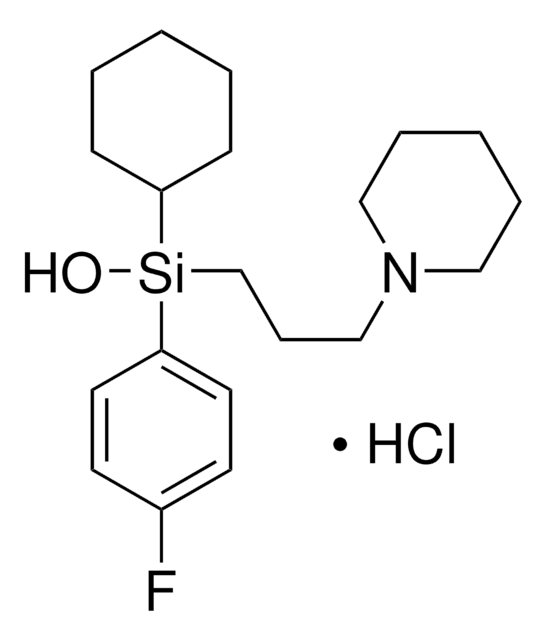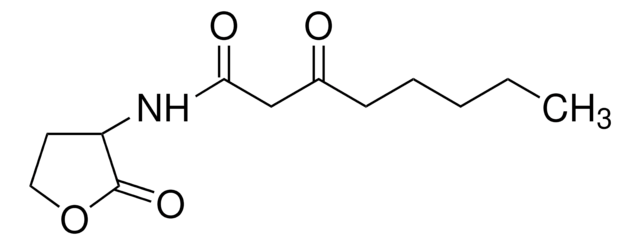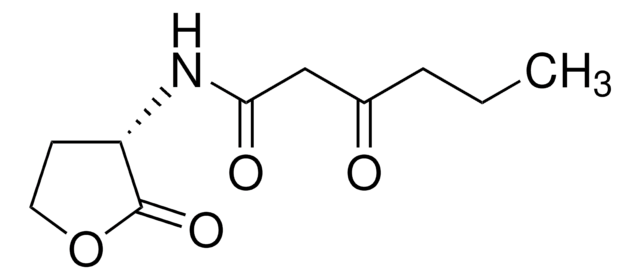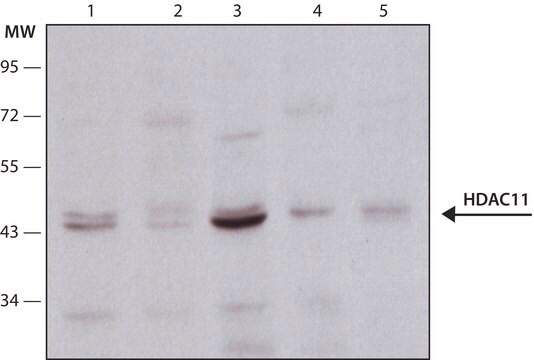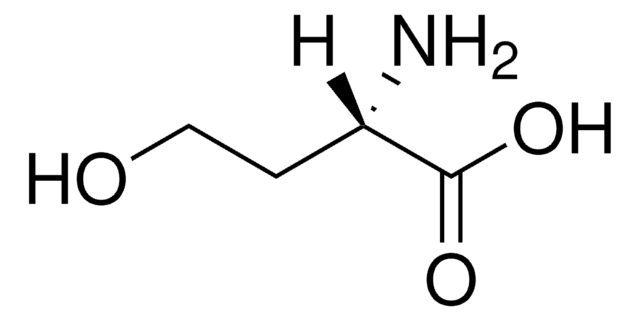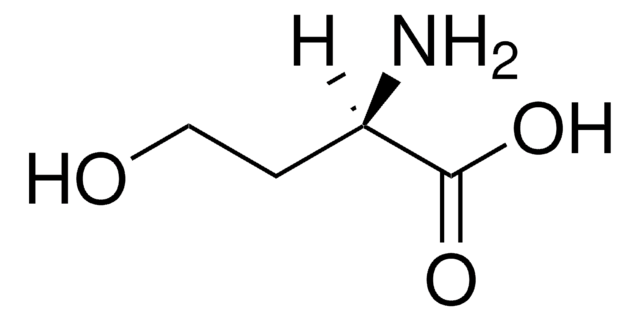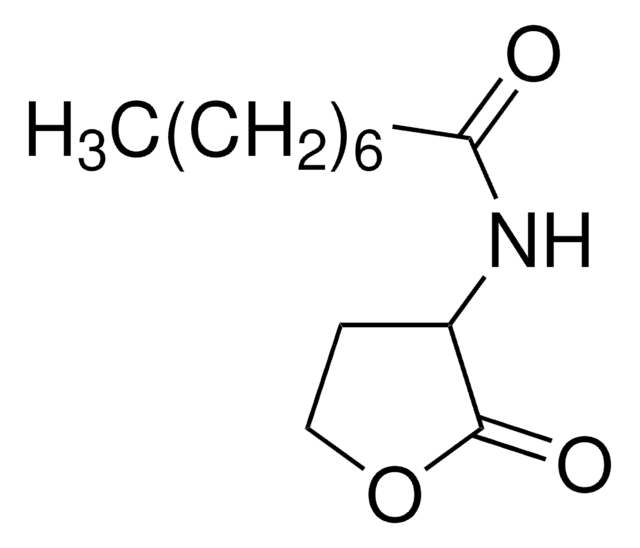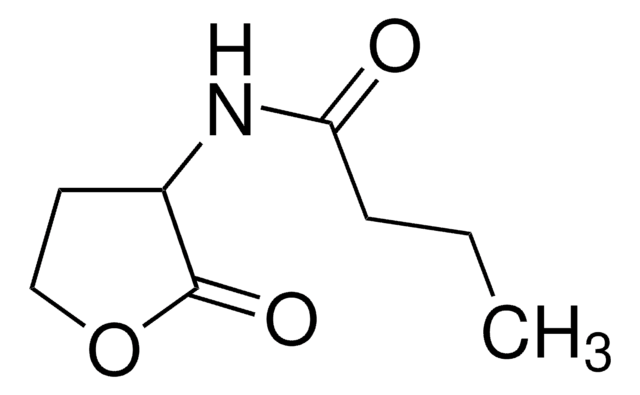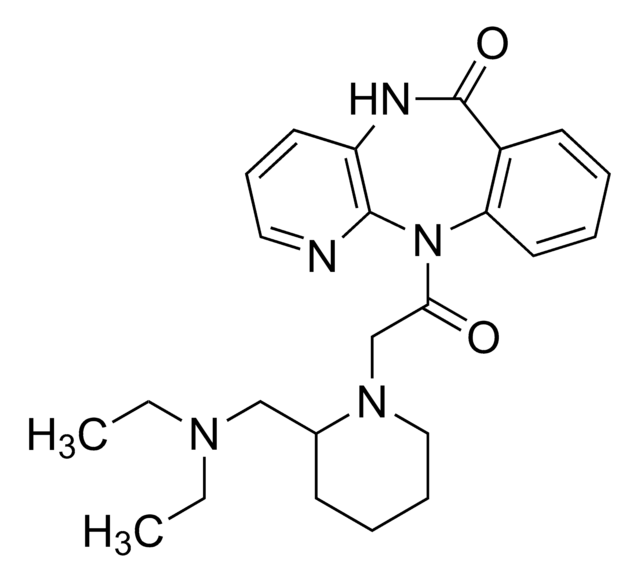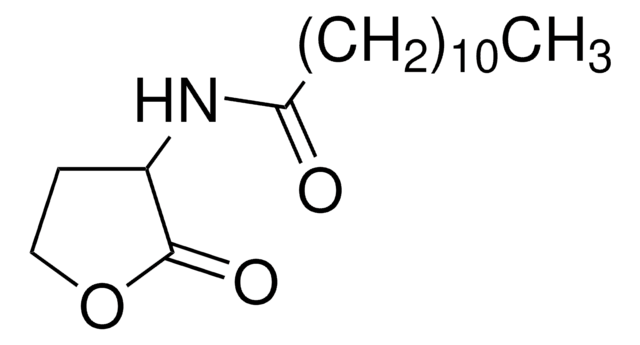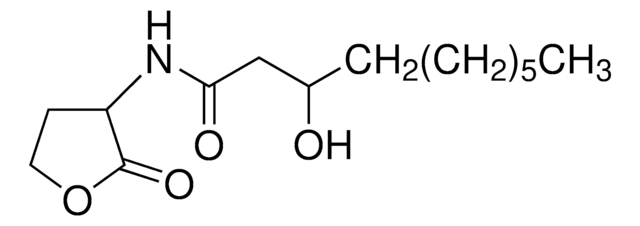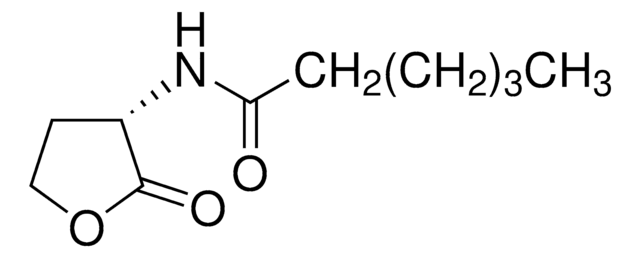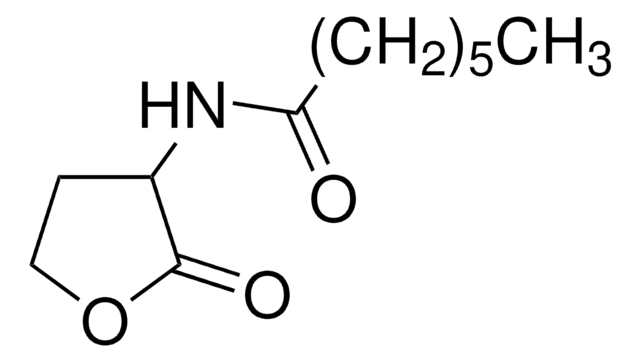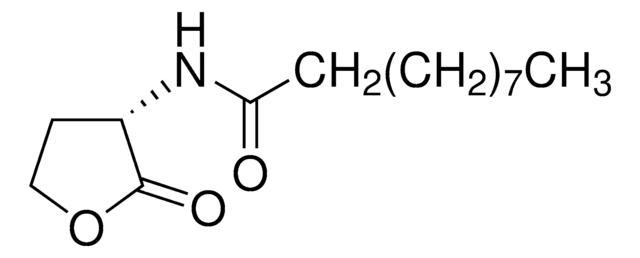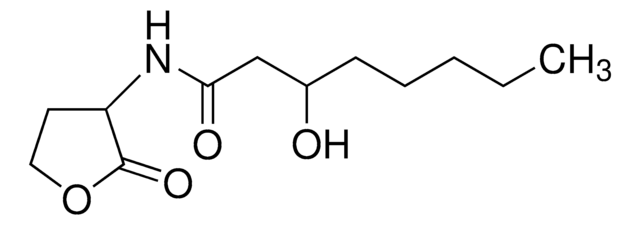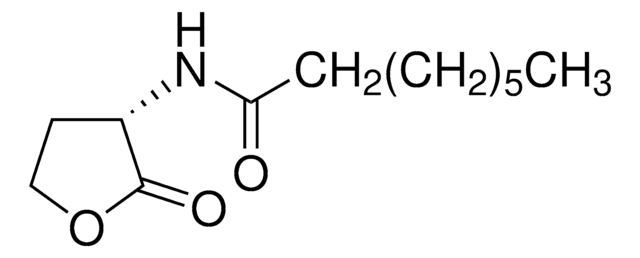K3255
N-(β-Ketocaproyl)-DL-homoserine lactone
analytical standard
Sinônimo(s):
N-(3-Oxohexanoyl)-DL-homoserine lactone
About This Item
Produtos recomendados
grau
analytical standard
Nível de qualidade
técnica(s)
HPLC: suitable
gas chromatography (GC): suitable
adequação
suitable for manufacturing use
aplicação(ões)
forensics and toxicology
pharmaceutical (small molecule)
veterinary
Formato
neat
temperatura de armazenamento
−20°C
cadeia de caracteres SMILES
CCCC(=O)CC(=O)NC1CCOC1=O
InChI
1S/C10H15NO4/c1-2-3-7(12)6-9(13)11-8-4-5-15-10(8)14/h8H,2-6H2,1H3,(H,11,13)
chave InChI
YRYOXRMDHALAFL-UHFFFAOYSA-N
Aplicação
Código de classe de armazenamento
11 - Combustible Solids
Classe de risco de água (WGK)
WGK 3
Ponto de fulgor (°F)
Not applicable
Ponto de fulgor (°C)
Not applicable
Equipamento de proteção individual
Eyeshields, Gloves, type N95 (US)
Escolha uma das versões mais recentes:
Já possui este produto?
Encontre a documentação dos produtos que você adquiriu recentemente na biblioteca de documentos.
Os clientes também visualizaram
Nossa equipe de cientistas tem experiência em todas as áreas de pesquisa, incluindo Life Sciences, ciência de materiais, síntese química, cromatografia, química analítica e muitas outras.
Entre em contato com a assistência técnica